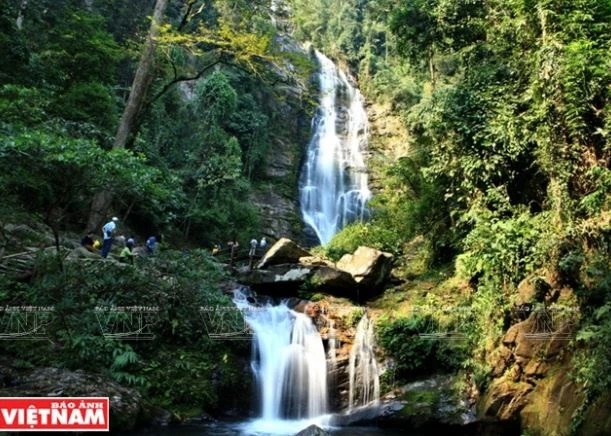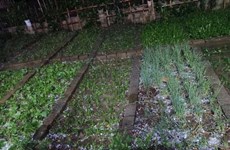Plan to protect biodiversity of Western Nghe An Biosphere Reserve unveiled
 Khe Kem Fall in Pu Mat National Park, Western Nghe An Biosphere Reserve (Photo: VNA)
Khe Kem Fall in Pu Mat National Park, Western Nghe An Biosphere Reserve (Photo: VNA) Nghe An (VNA) – The People's Committee of central Nghe An province has unveiled a comprehensive plan to manage and protect the environment of the Western Nghe An Biosphere Reserve until 2027, with a vision to 2030.
The plan aims
to address environmental degradation of the natural heritage site, conserve biodiversity; support research, monitoring, training and community education on conservation practices
and sustainable development, contributing to socio-economic development and
climate change adaptation.
Nghe An set a goal of developing ecological
economic models through socio-economic development activities, efficient
exploitation and sustainable management of forest natural resources and unique
cultural values of the community. It will leverage multi-functional values of
forest ecosystem, payment for forest environmental services, carbon credit
trading, ecotourism development, landscape preservation closely linked with
biodiversity conservation and climate change adaptation, towards improving
people’s income in the western Nghe An region.
The Western Nghe An Biosphere Reserve was
officially recognised by UNESCO as a World Biosphere Reserve on September 18,
2007, with a total area of 1,299,795ha, the largest in Southeast Asia. It
serves as a green corridor connecting three core zones, including Pu Mat
National Park, Pu Huong Nature Reserve and Pu Hoat Nature Reserve.
This area boasts a high level of
biodiversity with a rich variety of species, ecosystems and gene sources of
plants. It has recorded 3,627 plant species belonging to 1,184 genera, 205
families, and 39 orders, along with 480 genera and 942 vertebrate species and
over 1,000 insect species. It is home to many endangered and rare plant
species, including 134 species listed in the 2007 Vietnam Red Data Book, 20
species listed in the International Union for Conservation of Nature (IUCN) Red List of Threatened and
Endangered Species 2021, and a wealth of valuable medicinal plants./.












